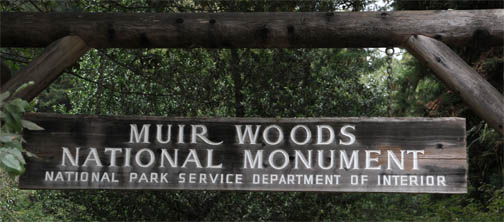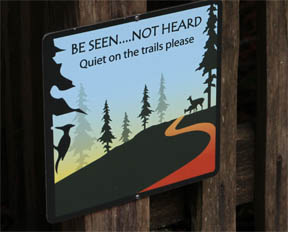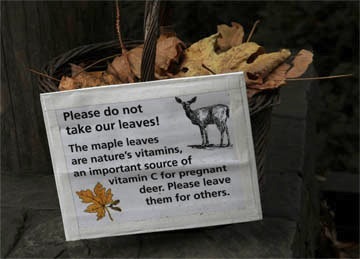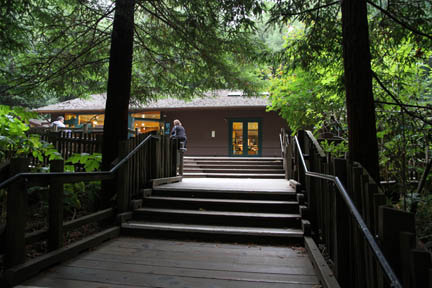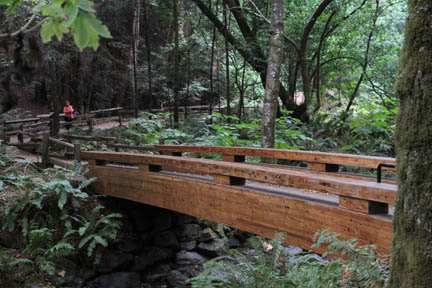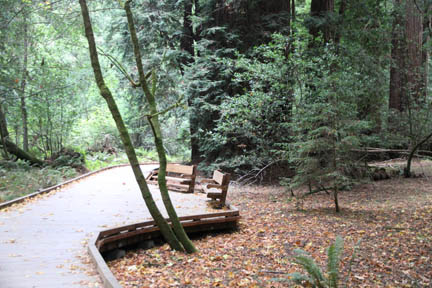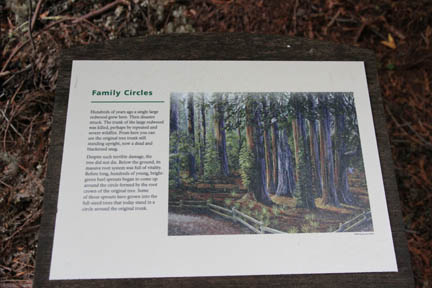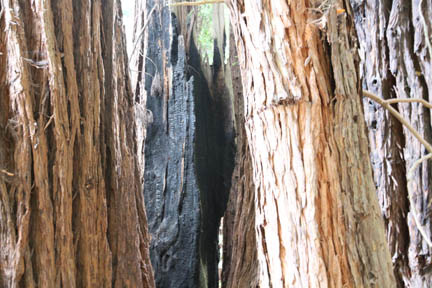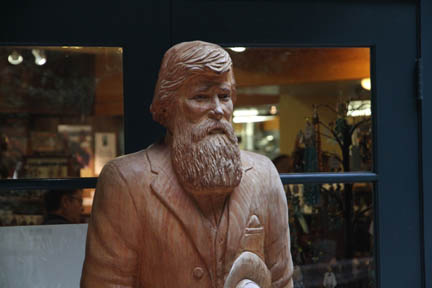A Visit to Muir Woods National Monument
Fireside Chat: A Visit to Muir Woods National Monument
J. William T. Youngs
October 3, 2012
(As of October 5, 2012, I'm still working on this. A film of the forest and stream will be completed soon)
I visited Muir woods this afternoon, driving there by motorcycle from a campground in Olema, California. The last ten miles up to the woods was more adventure than I'd anticipated: up and up an windy road along the Pacific Coast with the right wheel of my Spyder closer than I liked the perilous cliff just to the right. And there were those cars behind me wanting to go faster than I did. Drive a mile, pull off on the narrow shoulder, and don't look down as the cars whizzed by. Then I pulled off Highway 1 onto another windy steep road, but at least this one led up into the forest -- no more cliffs. And soon I was at Muir Woods. John Muir speaks of nature soothing our troubled spirits -- I'll tell you, after that ride I was ready for some soothing!
J. William T. Youngs
October 3, 2012
(As of October 5, 2012, I'm still working on this. A film of the forest and stream will be completed soon)
I visited Muir woods this afternoon, driving there by motorcycle from a campground in Olema, California. The last ten miles up to the woods was more adventure than I'd anticipated: up and up an windy road along the Pacific Coast with the right wheel of my Spyder closer than I liked the perilous cliff just to the right. And there were those cars behind me wanting to go faster than I did. Drive a mile, pull off on the narrow shoulder, and don't look down as the cars whizzed by. Then I pulled off Highway 1 onto another windy steep road, but at least this one led up into the forest -- no more cliffs. And soon I was at Muir Woods. John Muir speaks of nature soothing our troubled spirits -- I'll tell you, after that ride I was ready for some soothing!
As I walked through the forest I was looking for examples of the kind of lessons we've learned in class about the parks from studying their history. First, this is a National Monument -- so that is the first "lesson," an opportunity to review something we've learned in class.
(1) What is a national monument?
(2) When were they first created?
(3) Why were they so appealing to President Theodore Roosevelt?
(4) What was the very first national monument?
(5) Muir Woods became a national monument in 1908. Who was the president of the United States at that time?
OK, on into the park. I liked the sign you'll see below. I had seen a similar sign this past summer at the Gettysburg National Military Park, asking silence out of respect for the soldiers who died there during the Civil War. What kinds of associations can you think of for a sign requesting silence in the presence of giant redwoods?
Here's that little sign:
(1) What is a national monument?
(2) When were they first created?
(3) Why were they so appealing to President Theodore Roosevelt?
(4) What was the very first national monument?
(5) Muir Woods became a national monument in 1908. Who was the president of the United States at that time?
OK, on into the park. I liked the sign you'll see below. I had seen a similar sign this past summer at the Gettysburg National Military Park, asking silence out of respect for the soldiers who died there during the Civil War. What kinds of associations can you think of for a sign requesting silence in the presence of giant redwoods?
Here's that little sign:
And how about this sign, below. We've been learning that in the early days of the parks it was hard to protect the buffalo from extermination or to keep tourists from pouring soap in the geysers. We've grown a lot more sensitive about "leaving it alone" in the natural world, and also a lot more knowledgeable about how one part of the natural world (in this case, leaves) nurtures another part (in this case, pregnant deer).
I assume that park employees picked up these leaves from the forest floor - and will put them back!
We have been studying how in the early days of the parks, men and women thought deeply and debated extensively how parks should be preserved, protected, and enhanced. One development has been an attention to detail in deciding what the "build environment" of the parks should be. What were the appropriate roads, fences, paths, bridges, and buildings by the way. Here is the park-appropriate approach to walkways and to the park shop at the Muir Woods National Monument:
We have been studying how in the early days of the parks, men and women thought deeply and debated extensively how parks should be preserved, protected, and enhanced. One development has been an attention to detail in deciding what the "build environment" of the parks should be. What were the appropriate roads, fences, paths, bridges, and buildings by the way. Here is the park-appropriate approach to walkways and to the park shop at the Muir Woods National Monument:
It looked to me like a magical shop in a fairy tale! And it certainly blended into the forest.
This bridge in the Muir Woods is another example of park-friendly architecture.
The wooden walkways through the forest also blended in.
One of the goals of the National Parks is to educate. Here is a good example of how they perform that mission at Muir Woods National Monument. Walking along the board-walk pathway you see a cluster of trees packed tightly together, and you wonder, how did they happen to grow so close to each other. This sign tells the story:
One of the goals of the National Parks is to educate. Here is a good example of how they perform that mission at Muir Woods National Monument. Walking along the board-walk pathway you see a cluster of trees packed tightly together, and you wonder, how did they happen to grow so close to each other. This sign tells the story:
Whoops! I see that my camera did not show the text in enough detail for you to read it. So here is the gist: long, long ago a giant tree stood here. Fire after fire burnt it, weakening it until it fell, leaving only a tall stump. BUT from its roots came new life, and other trees grew close by. Here is a photo of the newer trees and the old burnt tree:
That's the old burned tree in the middle with it's "progeny" growing right beside it --John Muir might say, as if to comfort the fallen patriarch!
And here's another appropriate image for Muir Woods:
And here's another appropriate image for Muir Woods:

